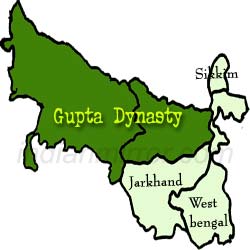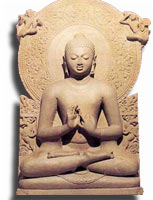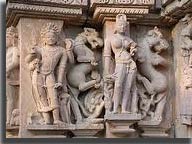History :
Gupta Dynasty's long and efficient rule has made a huge impact on the political, social and cultural spheres in the history of ancient India. Gupta Period is known as the Golden Age of India. Culture & lifestyle of the Gupta dynasty is well known through the availability of various ancient coins, Scriptures, inscriptions, texts, etc. belonging to that era. Gupta rulers were efficient conquerors and good administrators who knew how to govern.
During Gupta Period education flourished and many great discoveries were made in these fields. Aryabhatta and Varahamihira, the two great mathematicians contributed in the field of Vedic Mathematics. Aryabhatta found and estimated the value of "Pi" to the fourth decimal place. Algebra was developed to a great extent and the concepts of zero and infinity were also found and symbols of numbers 1 to 9 were devised which was a great contribution in mathematics. Advances in astronomy were also on heights in Gupta Age. Astronomers and philosophers proposed the theory that the earth was not flat but round

During this age Sanskrit language and literature were at its peak. Poets Kalidasa, Dandi, Visakhadatta, Shudraka, and Bharavi -- all belonged to the Gupta Age. Puranas and shastras were composed and famous commentaries on sacred works appeared. This age brought about the practice of dedicating temples to different deities which was followed by fine artistic temple architecture and sculpture. Of the twenty-eight Ajanta caves, most of them were constructed during Gupta Period. Gupta inscriptions on "victory pillars" provide first hand information not only about royalty but society in general. Due to this advancement in different areas this period was called the "Golden Age of Indian History".
Gupta Dynasty had some of India's best and the most magnificent works of art. The famous cave paintings at Ajanta, the Sarnath Buddha, the Deogarh Dashavatara Temple panels and the Udaygiri Varaha Cave are some marvellous constructions of the Gupta age.

Place |
Bihar , Uttar Pradesh |
Period |
A.D. 320-550 |
Language |
Sanskrit |
Religion |
Hinduism Buddhism |
Kings |
Sri-Gupta, Chandragupta I, Vishnugupta
|
Chandragupta (319 - 335 A.D)
Srigupta I (270-290 AD) a petty ruler of Magadha (modern Bihar) established Gupta dynasty with Patliputra or Patna as its capital. He was succeeded by his son Ghatotkacha (290 - 305 AD). His son Chandragupta ascended the throne after Ghatotkacha. He was a very powerful Gupta ruler who waged many battles to attain his title. He was married to Kumaradevi after which the Gupta dynasty came into eminence which bought an enormous power, resources and prestige. Chandragupta eventually assumed the title of Maharajadiraja, which means king of kings.
Samudragupta (335 - 375 A.D)

Chandragupta II (375 - 414 A.D)
Also known as Vikramaditya, he was chosen by his father as the successor and the future ruler. Chandragupta II was an able ruler of Gupta Dynasty and a great conqueror. His conquered the peninsula of Saurashtra via the Arabian Sea which is considered to be one of his greatest military successes. With the capture of Saurashtra and Malwa, he established sea ports to facilitate trade and commerce. Capital city during his reign was Pataliputra.
Kumaragupta I (415 - 455 AD)
This gupta king ruled for forty years and was considered to be one of the most powerful rulers of the Gupta Period. He was known by different names like, Shri Mahendra, Ajita Mahendra, Simha Mahendra, Asvamedha Mahendra, Mahendra Karma, etc. During Kumaragupta's reign, the whole of India was united as one single entity. Though India was secular and people had their own thoughts and beliefs, yet they remained united and intact in any adversity. It proved when the subjects drove out the Hunas from the kingdom after the death of Kumaragupta. The historic scripts propound that Skandagupta was the ruler after Kumaragupta, though there are some theories that also mention Purugupta, Kumaragupta - II, etc. He was a very powerful conqueror and was considered to be at par with God Indra. The empire included the whole of North India from west to east and the peninsular regions of Gujarat.
Military organization
Guptas had achieved immense success with the force of arms which would not be possible without the martial system. Historically, the best observation of this comes not from the Hindus themselves but from Chinese and Western observers. A contemporary Indian document, regarded as a military classic of the time, the Siva-Dhanur-veda, offers good insight into the military system of the Guptas. Like Indian kings before them and after centuries, they would have utilized war elephants.
Due to the defeat of Skandagupta by Huna, the Gupta Empire came to an end. The empire came to an end in the face of the Huna which happened due to the defeat of barbarians under Skandagupta.


